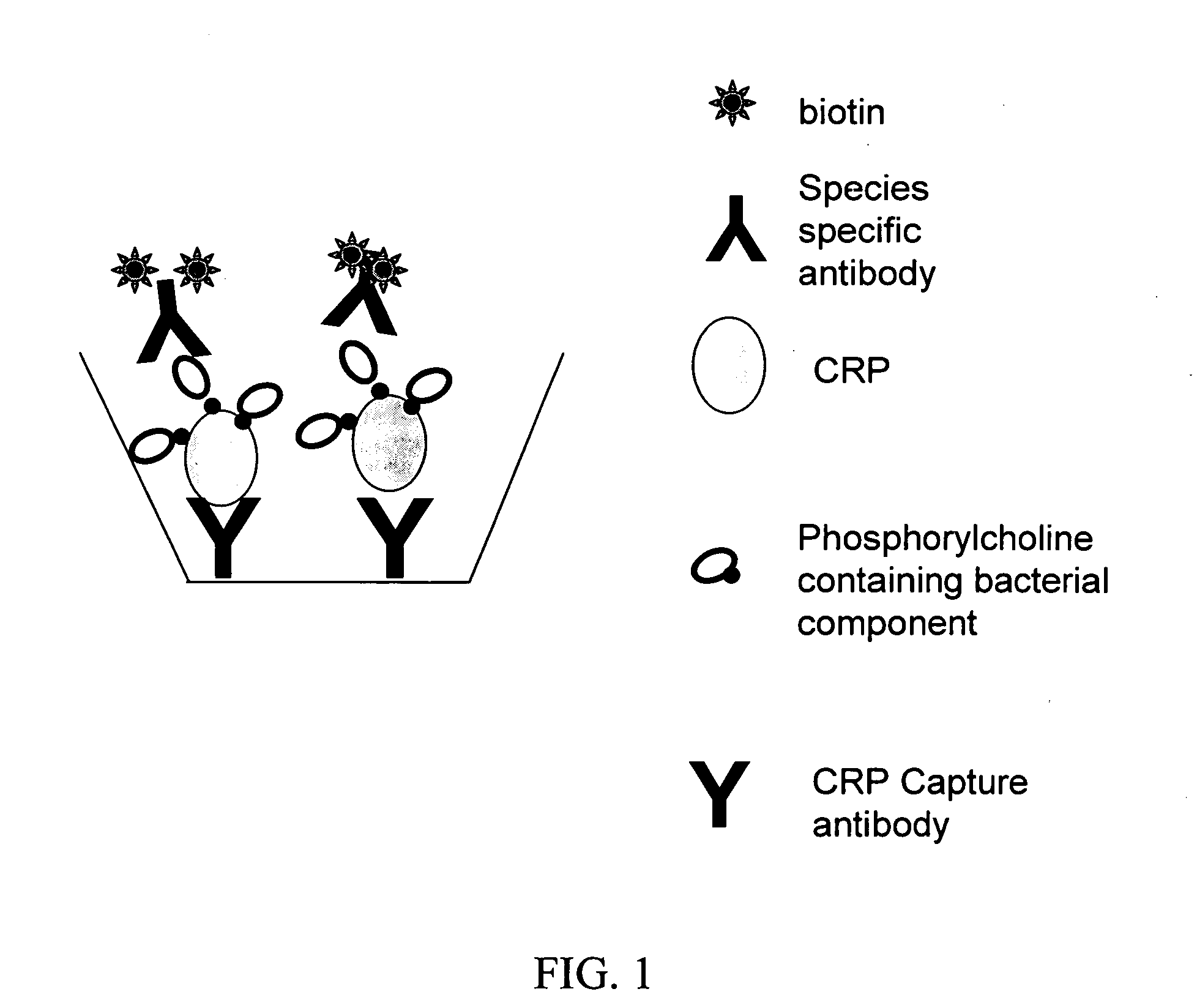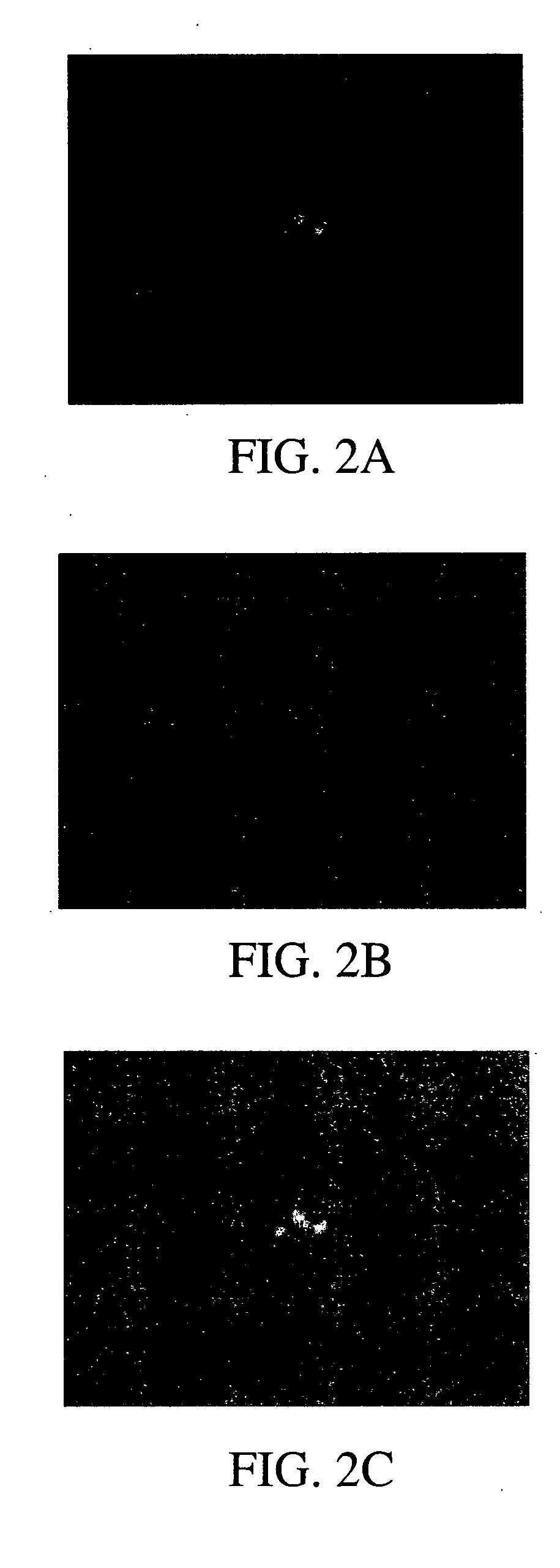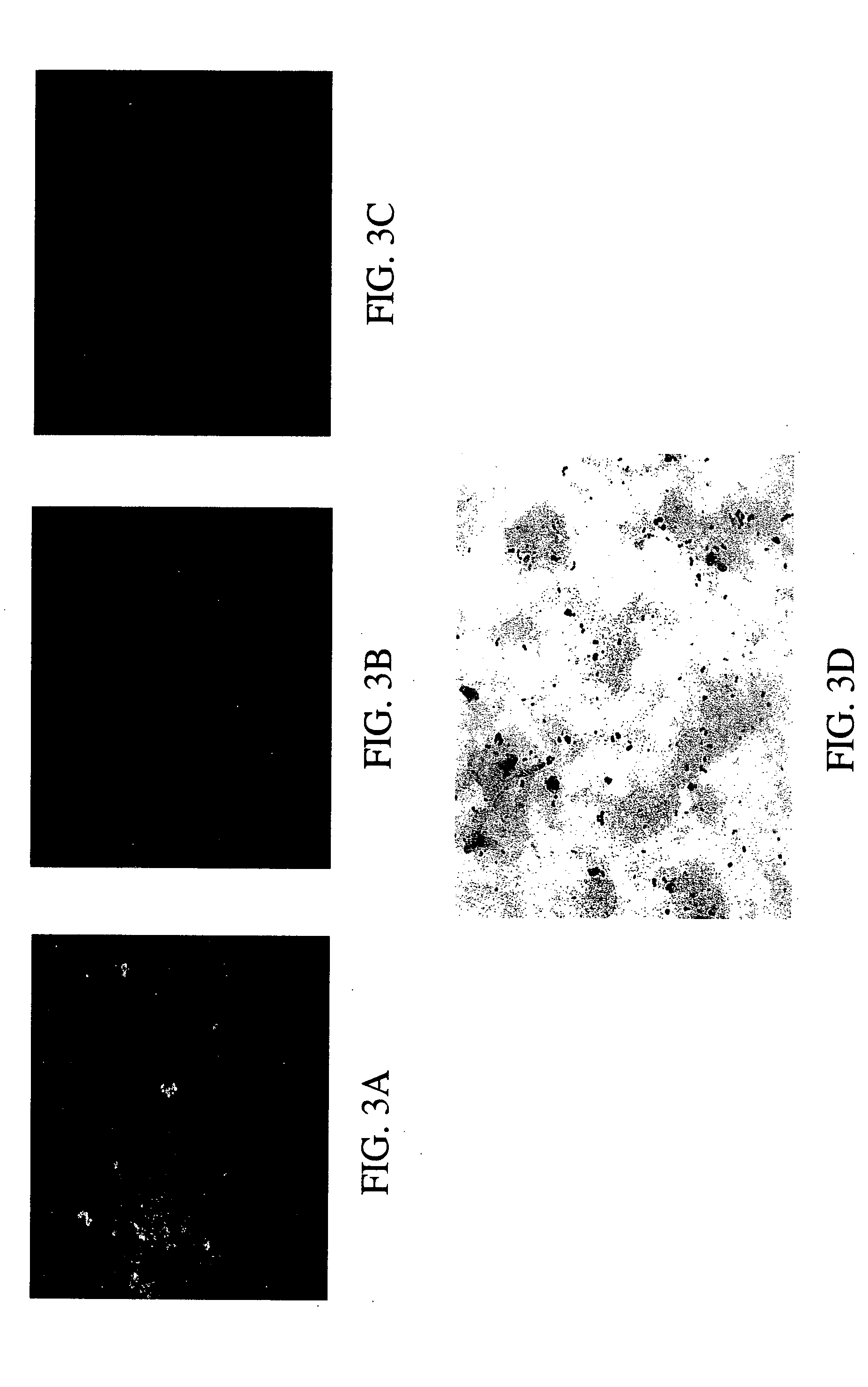Assays for detecting pathogenic respiratory bacteria
a technology of pathogenic respiratory bacteria and assays, which is applied in the field of rapid diagnostic tests, can solve the problems of difficult for healthcare personnel to distinguish between these microorganisms, limited use of animal models, and premature mortality in the us and worldwide, and achieves accurate diagnosis, rapid treatment of patients, and reliable and effective diagnostics.
- Summary
- Abstract
- Description
- Claims
- Application Information
AI Technical Summary
Benefits of technology
Problems solved by technology
Method used
Image
Examples
example 1
[0070] A paraformaldehyde fixed sputum smear obtained from an adult patient with known Streptococcus pneumoniae pneumonia was probed using a monoclonal antibody to human CRP followed by a FITC-labeled secondary antibody. Fluorescent microscopy was used to demonstrate that the CRP in the sputum was bound to the S. pneumoniae in the sputum. This was then compared to a gram stain of the same smear to confirm the morphology of the microorganism. A second sputum smear from the same patient stained with an isotype control antibody followed by the FITC secondary antibody failed to show any fluorescent staining, demonstrating that the monoclonal antibody to human CRP is specific. The staining technique along with the microscopy work was accomplished in under 2 hours.
example 2
[0071] A biological sample, such as a sputum sample, is obtained from a human patient and processed to solubilize the biological sample. Solubilizing the sample can comprise the addition of acetonitrile to a final concentration of 60% and trifluoroacetic acid to a final concentration of about 0.1% and incubating the sample for about 16 hours at about 25° C. Alternatively, the sample can be solubilized using N-acetyl cysteine according to methods well known in the art. The solubilized sputum sample is then centrifuged at about 1500×g for about 10 minutes to remove particulate and insoluble matter. The sample can then be lyophilized. The sample can then be re-suspended in a physiologically appropriate medium, such as deionized water or saline solution, and sonicated. The acidity of the sample can be neutralized using an appropriate buffer such as Tris-HCl (pH 7.5).
[0072] A multi-well plate, preferably polystyrene or another suitable substance, is coated with a dilution of an antibody...
PUM
 Login to View More
Login to View More Abstract
Description
Claims
Application Information
 Login to View More
Login to View More - R&D
- Intellectual Property
- Life Sciences
- Materials
- Tech Scout
- Unparalleled Data Quality
- Higher Quality Content
- 60% Fewer Hallucinations
Browse by: Latest US Patents, China's latest patents, Technical Efficacy Thesaurus, Application Domain, Technology Topic, Popular Technical Reports.
© 2025 PatSnap. All rights reserved.Legal|Privacy policy|Modern Slavery Act Transparency Statement|Sitemap|About US| Contact US: help@patsnap.com



